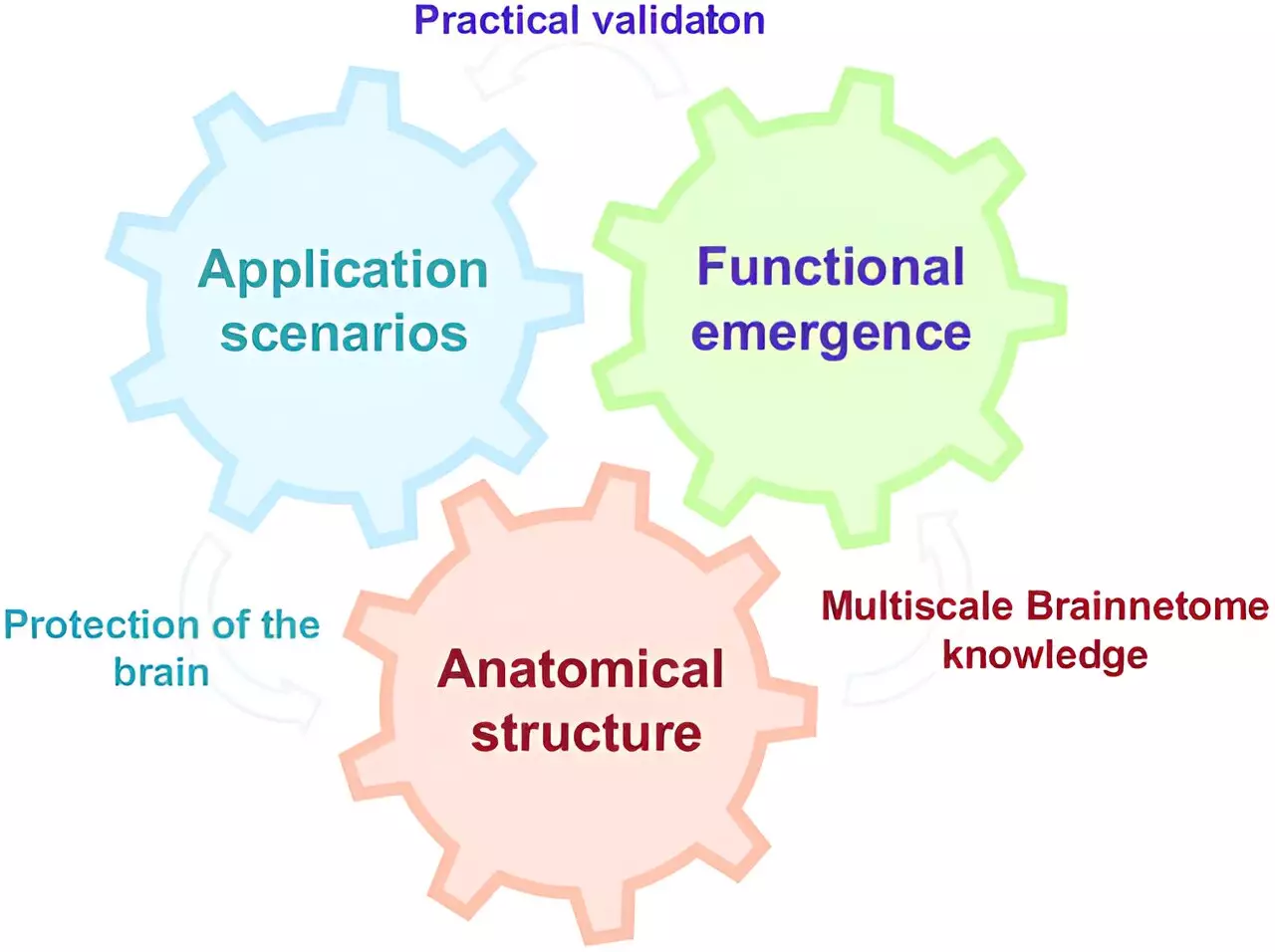

In recent years, advancements in neuroscience and brain-inspired artificial intelligence have significantly expanded our understanding of intelligence. A research team led by Tianzi Jiang at the Institute of Automation of the Chinese Academy of Sciences has introduced an innovative platform called the Digital Twin Brain. This platform has the potential to bridge the gap between biological and artificial intelligence, offering new insights into both fields.
Both biological and artificial intelligence share a common attribute: network structure. To leverage this similarity, researchers aim to construct a digital model, or “twin,” of the brain using artificial networks. By doing so, they can incorporate knowledge about biological intelligence into the model. The ultimate goal of this endeavor is to drive the development of artificial general intelligence and revolutionize precision mental health care. Achieving this feat requires collaboration among interdisciplinary scientists worldwide.
The Digital Twin Brain enables researchers to delve into the inner workings of the human brain. They can simulate and modulate the brain in different states to study various cognitive tasks. For instance, researchers can simulate the brain’s resting state and explore how it malfunctions in different disorders. Additionally, they can develop methods to shift the brain away from undesirable states by modulating its activity. While this may sound like science fiction, the concept of the Digital Twin Brain is grounded in solid biological foundations.
The Digital Twin Brain integrates three core elements: brain atlases, multi-level neural models, and a range of applications. Brain atlases serve as the structural scaffolds and biological constraints for the digital twin. Multi-level neural models, trained on biological data, simulate various brain functions. Applications built on the current “twin” further evaluate and update it. These three core elements continually evolve and interact in a closed loop, enhancing the accuracy and realism of the digital twin.
Creating an accurate digital twin requires highly nuanced brain atlases. These atlases encompass different scales, multiple modalities, and even data from various species. They provide insights into the connections and interactions between different brain regions, as well as the fundamental principles of brain organization. However, neural models must be based on these brain atlases to ensure “biological plausibility.” This poses technical challenges in terms of modeling and constraining the neural networks.
The Brainnetome Atlas, developed by researchers at the Institute of Automation of the Chinese Academy of Sciences in 2016, plays a crucial role in developing the Digital Twin Brain. This macroscale atlas encompasses 246 brain sub-regions and aims to create an extensive and detailed mapping of the structure and connectivity of the human brain. Integrating the Brainnetome Atlas into the Digital Twin Brain framework enhances the accuracy and realism of the digital twin’s simulation.
Existing brain simulation platforms often lack a solid anatomical basis. To address this limitation, the authors emphasize the importance of designing an open-source, efficient, flexible, and user-friendly brain atlas-constrained platform. Such a platform would provide the necessary support for multimodal and multiscale modeling, allowing for more comprehensive brain simulations.
Despite significant progress, several challenges remain in realizing the full potential of the Digital Twin Brain. Effectively incorporating biological knowledge into the digital twin, designing better models for simulations, and integrating the platform into practical scenarios are areas that require further investigation. However, the Digital Twin Brain represents a convergence of neuroscience and artificial intelligence, offering immense potential for advancing both fields. With global collaboration and concerted efforts, the Digital Twin Brain can revolutionize our understanding of intelligence, enable the development of intelligent technologies, and facilitate breakthroughs in brain disorder therapeutics.
The Digital Twin Brain serves as a groundbreaking platform that brings together the realms of biological and artificial intelligence. By combining intricate brain atlases, dynamic neural models, and various applications, this platform has the power to transform our understanding of intelligence. With further research and collaboration, the Digital Twin Brain holds the promise of advancing artificial general intelligence and revolutionizing precision mental health care. Its potential impact on the human mind, as well as the development of intelligent technologies and brain disorder therapeutics, is truly transformative.
A groundbreaking expedition led by an international research team, featuring esteemed scientists from the University…
The pursuit of coherent control over wave transport and localization stands as a monumental challenge…
In recent astronomical explorations, researchers have unearthed a striking phenomenon emanating from a distant corner…
The quest for sustainable practices within the chemical industry is more critical than ever. Researchers…
In the complex interplay of human health, the relationship between the gut and the brain…
The relentless drive for sustainable energy solutions has fueled remarkable advancements in solar technology, with…
This website uses cookies.